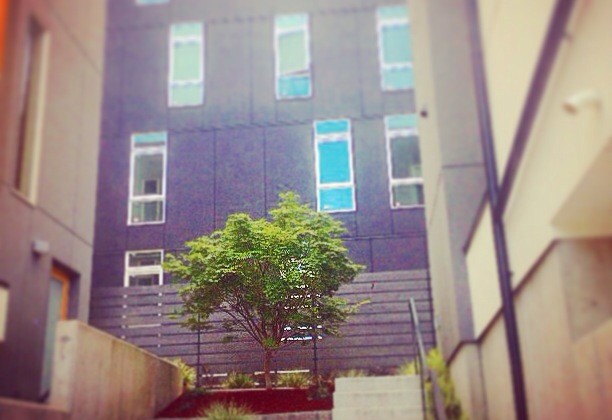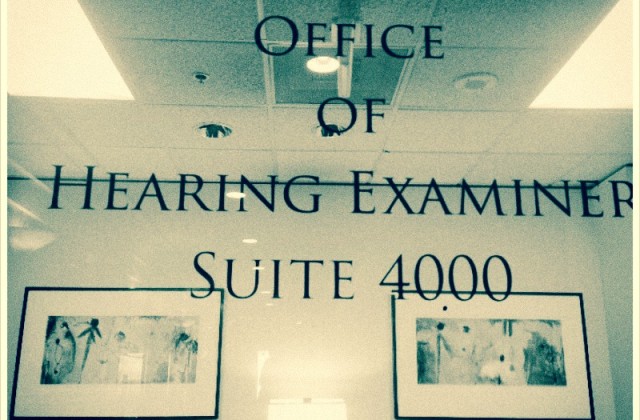Regional Organizations Support Microhousing
Since the passage of the Growth Management Act (GMA) 25 years ago, there has been one group in the state that has been tenacious about defending the principles of the GMA: Futurewise. Formerly known as 1000 Friends of Washington, Futurewise stands up in legal fights against sprawl and has also been the most consistent voice in legislative battles over smart growth in Olympia. Today they and Washington Bikes, took a strong clear stand in favor of microhousing (you can read the whole letter here).
We believe that micro-housing is an essential housing type which can and should be supported by the City of Seattle. Allowing micro-housing units will assist the City in meeting its housing targets so that we can better address the increasing demand for housing in the city, as well as provide current and future residents of Seattle greater housing choice. Given Seattle’s growing affordable housing needs, micro-housing units can also present a more affordable housing living option for residents.
Along with broad support for microhouisng both groups affirmed the idea that builders of microhousing should have more flexibility in unit size.
Decreasing the current minimum unit size and allowing the inclusion of kitchen or food preparation areas to be flexible to meet market demand. Allowing for reduced minimum unit size allows for more housing choices for residents. With a growing demand for housing and a difference in the type of housing people are looking for, more housing choices with more housing price choices is a good thing.
Futurewise gets that when there is a minimum unit size imposed, even an average unit size, fewer more expensive units result. Why not let renters decide what they want to buy instead of making them pay more for bigger apartments? Now if we can just convince the City Council of the same thing. Please contact Councilmember O’Brien and let him know your thoughts at Mike.Obrien@seattle.gov.
Martha Rose on Micros: Let’s Overcome Fear of Change
The following is an e-mail that was sent to Seattle City Council President Tim Burgess encouraging that the Council take a different approach to microhousing legislation. We need many more of these kinds of messages to get to Council as they consider legislation this week and next.
Dear Mr Burgess,
- “There is no sense of community in microhousing.” Who can judge if there is or isn’t community unless they live there and not everyone wants to share a bathroom!
- “Only transients live there.” Many of us have been transient at one time in our life or another. Life is nothing but a long stream of transitions, whether it be finding your footing after landing in a new town or getting rid of the Big House as an empty nester.
- “Our parking will get used up by them.” Our new SDOT Director, Scott Kubly, spoke at the last Seattle Chamber of Commerce meeting about how (much) higher density actually causes both a reduction in traffic and vehicle ownership. Whether that will hold true for Seattle remains to be seen because we tend to cave to neighbors who don’t want that high density. Also, those who use on the street as “their” parking need to understand that they have had a free ride with free parking all of these years
- “The buildings are too bulky, too high, too ugly.” This mantra has been going on ever since I have lived in Seattle and has been applied to 2 story single family homes, to high rises, and everything in between. When are we going to stop letting the general population decide the best design, the best style for the neighborhood and consequently, the floor plans and everything else about building, when their expertise may be dentistry, or teaching, or software designer? Builders do not make a habit of telling others how to perform their jobs.
This conversation is deep and long and clearly this email only touches the surface. I think in summary, the opposition boils down to one thing – fear of change – we all have it and we all need to face it directly to overcome it.
 Martha Rose is President of the Master Builders Association of King and Snohomish Counties. She is best known by many as the ‘Queen of Green,‘ is a national leader in the Green Building Movement. She also is owner and operator of Martha Rose Construction. Her interest in energy efficiency and sustainable building practices goes all the way back to the 1970‘s and currently is her main focus. Today Martha is striving toward building Zero-Energy spec-homes.
Martha Rose is President of the Master Builders Association of King and Snohomish Counties. She is best known by many as the ‘Queen of Green,‘ is a national leader in the Green Building Movement. She also is owner and operator of Martha Rose Construction. Her interest in energy efficiency and sustainable building practices goes all the way back to the 1970‘s and currently is her main focus. Today Martha is striving toward building Zero-Energy spec-homes.Microhousing Index: Micros by the Numbers
The Microhousing Index is an homage to Harper’s Index which for years has told an often satirical story using only data points. The story the numbers tell is clear: the proposed changes in Councilmember O’Brien’s legislation will mean fewer (if any) microhousing options that will be more expensive. Tell the City Council (e-mail Councilmember Mike Obrien here) to keep microhousing an option for those that want it.
HUD maximum housing price for person earning 60 Percent of Area median income renting a studio apartment: $927[1]
Typical monthly microhousing rent (including utilities): $850[2]
Typical micro vacancy rate: 0[3]
Councilmember Mike O’Brien’s proposed micro minimum: 220 net square feet (NSF)
Estimated price of microhousing with new minimum: $1,250[4]
Number of projects completed or in process: 68[5]
Total people housed when completed: 3,609[6]
Number of units had O’Brien’s minimum been in effect: 2,400[7]
Number of buildings in low-rise zones: 44[8]
Number of buildings in mid-rise zones: 10[9]
Number of buildings in NC, C, and DMC zones: 14[10]
Number of buildings in single-family zones: 0[11]
Percentage of residents that own cars: 25[12]
Estimated number of cars owned by microdwellers: 902[13]
New parking spots required in new proposal: 1,804[14]
Estimated cost to build underground parking spot: $40,000[15]
Additional revenue needed per month, per spot, to cover parking costs: $321[16]
Typical number of sinks in a microhousing unit: 1
Number of additional sinks if Councilmember Rasmussen’s sink requirement was in effect: 3,609[17]
Total estimated cost of one additional sink fixture for all microhousing: $644,892.21[18]
Low-Rise Appeal: Smart Growth Seattle:1, DPD: 0
Smart Growth Seattle, called a “creature of the internet” by the Department of Planning and Development(DPD), has successfully fought DPD’s attempt to dismiss our appeal of a proposed downzone of Seattle’s low-rise zones.
Now, our appeal can go forward and will be heard. Our goal, and the reason why we filed the appeal, is to have the City Hearing Examiner direct DPD to evaluate the true environmental impacts of downzoning the low-rise zones. Some of those environmental impacts that DPD ignored or under-played, include:
- Greater pressure to more densely develop single family zoned lands,
- Increased pressure to more intensely develop lands in adjoining cities – together with the transportation impact that causes throughout the region,
- The practical impact these proposed amendments will have is to reduce the construction of new parking spaces in LR zones with new development, creating environmental impacts from increased street parking and traffic,
- That the City asserted these amendments will have only a minor impact on housing affordability when, in fact, development potential for some low-rise zoned sites will be reduced by 40% which will result in a significant impact on housing affordability,
- That there will be a significant adverse environmental impact on energy usage created by the proposed elimination of the ability to construction low energy buildings with unenclosed exterior halls, stairs and breezeways, and
- The lack of any analysis by the City of the cumulative impact of this legislation on all of the above, when combined with the pending microhousing amendments.
Now, with the City’s motion defeated, we can make our case to the Hearing Examiner that the City needs to do more work on the legislation to show the profound impacts on housing supply. We’ll keep you updated on what’s next.
Will Microhousing in Seattle Survive?
Later today, at a meeting of the Seattle City Council, legislation revising microhousing regulations will be introduced. As it now stands, Councilmember Mike O’Brien has some seriously damaging elements that will make microhousing harder to build—it may become so difficult that builders will opt for other, larger, and, for the renter, pricier options. The prices will go up, because Councilmember O’Brien is trying to make neighbors happy by imposing size limits on microhousing that will make many projects infeasible.
One project I looked at this week has units that range from 170 to 220 square feet. There are 35 rooms in this project, and one doesn’t have to be a mathematician—or have an MBA as O’Brien does—to understand that if that building was required to have all the room sizes average 220 as the Councilmember proposes, there would be fewer units. Fewer rooms means that the same financing, land, and construction costs will be spread among fewer units. That means higher rents.
Will microhousing in Seattle survive?
The answer depends on you.
Over the course of the last several months we’ve seen the Seattle City Council take deliberate steps to reduce housing supply by making it harder to build, imposing new regulations and rules that increase costs, and reduce housing capacity–essentially a huge downzone–in single-family neighborhoods and low-rise zones, a zone equipped to welcome many new people who want to live and work in our city. Next week the City Council will consider legislation that could negatively impact microhousing by mandating square footage minimums, and forcing microhousing through extra review and process that will end up in fewer and more expensive options for renters.
Please e-mail (and cc me) all Seattle City Councilmembers and the Mayor and let them know:
- I support microhousing as an important housing choice for people who want to live in Seattle;
- I support economic growth in Seattle and the jobs that come with it;
- In the next decade Seattle will welcome 120,000 new people and 115,000 new jobs. Planners say we need at least 70,000 housing units to accommodate this growth;
- Please make decisions to support more housing, especially innovative housing solutions like microhousing; and
- I urge you to oppose efforts to impose size limits and unit restrictions on microhousing that will decrease the number of units that can be built, and will increase their price.
ed.murray@seattle.gov
tim.burgess@seattle.gov
sally.bagshaw@seattle.gov
sally.clark@seattle.gov
jean.godden@seattle.gov
bruce.harrell@seattle.gov
nick.licata@seattle.gov
mike.obrien@seattle.gov
tom.rasmussen@seattle.gov
kshama.sawant@seattle.gov
Some want to say that microhousing is a contentious issue. But it is simple really; lots of people want the choice of smaller units in dense, transit friendly neighborhoods. Microhousing creates that choice for people who work in the city without any direct subsidization by the city. And remember, we’ve got 120,000 people moving to Seattle in the next 20 years. We can make more room for them and give them more options, or we can try to appease people already here.






